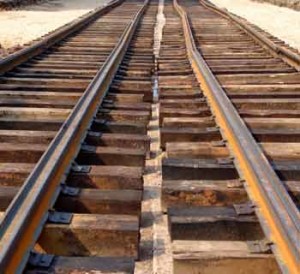You have the right to sue a railroad company for wrongful death at a railroad crossing if the company was legally responsible for the accident that killed your “next-of-kin,” a close family member. To prove your case, you will need evidence of one of the following:
- that the train engineer or other company employee acted negligently and caused the fatal accident or
- that the railroad crossing gate, either the signal or arm, was not working properly.
Eric Hageman is a national wrongful death lawyer. He and the attorneys at Pritzker Hageman have spoken at Harvard Law School, Cornell University and other venues on safety issues and litigation. You can contact Eric and his team of wrongful death lawyers using the form below.
Who Can Sue the Railroad Company for Wrongful Death?
In most states, the “next of kin” can sue for wrongful death. This generally includes the spouse, children, parents, grandparents, grandchildren, siblings, aunts, uncles, nieces, nephews and cousins. Any of these family members can bring a claim to obtain compensation for their loss. When this happens all of the family is notified of the wrongful death lawsuit and will share in any settlement or verdict amount.
Through the legal process, the next of kin has an opportunity to recover amounts for funeral expenses, medical expenses, potential earnings, loss of advice, loss of comfort, loss of assistance, loss of protection, loss of counsel and loss of society. In cases where there is clear and convincing evidence that the acts of the defendant show deliberate disregard for the rights or safety of others, some states also allow for punitive damages. All of this is done to both compensate the family and hold the corporate wrongdoer accountable.

What to Do after an Accident at a Railroad Crossing
The most important question for you at this point is, “What do I do next?” If you have been in a railroad crossing accident, there are several important things you need to know:
- There are certain laws that govern railroad crossings. For instance, if a car is approaching some railroad tracks and the driver hears or sees a train, the car must stop at least 15 feet from the nearest rail and wait for the train to cross. On the other side, by federal law, when a train approaches a crossing, it must have it lights on and the horn blaring. Those are the basics.
- Railroad companies may be liable for injuries caused from any element within their control. This includes railroad crossings, platforms and crashes.
- You may only have 6 months to file a lawsuit. If your accident involved one of the many railroad companies owned or operated by the government, you need to move quickly if you want to make a claim. “Tort Claims Acts” may apply to injuries caused by the railroad. Tort claims acts usually require that the government entity be given notice of the injury within a very short time, and prohibit the filing of a lawsuit unless proper notice is given. In some states, the statue of limitations against government entities is as short as six months.
- Waste no time in creating a paper trail. Make sure a report is filed with the police, sheriff, or state highway patrol. Obtain names, addresses, and telephone numbers of all the witnesses. Photograph the accident scenes, including all the vehicles involved and any visible injuries. Obtain and keep receipts for all expenses related to the collision.
- See a medical professional as soon as possible. Minor injuries can turn into major problems, especially with the neck and back. It is better to get some help now, than to wait until you have permanent problems. You will also need documentation of your condition if you proceed with the legal process.
- Do not talk to anyone about your accident. Anything you say to insurance company representatives or investigators could make it harder for you to settle your claim. It is also a good idea not to sign anything, particularly some kind of release form, without talking to a lawyer first. This is just a smart way for you to protect yourself.
Underlying Causes of Railroad Crossing Accidents

Every year, 1,000 people lose their lives in railroad accidents. How does this keep happening?
To highlight one glaring problem, by federal rules, railroads are essentially self-regulated. Federal investigations and the news media have reported numerous safety violations concerning everything from defective train equipment and overworked employees to a lack of employee training and employees who are told not to report equipment defects or injuries. And very little has been done. Unless there have been several accidents and lawsuits related to a particular site, the railroads have done very little to improve safety.
Maybe the real issue is cost. Most railroad equipment is extremely outdated. Railroad companies continue to use technology that was developed in the 30s, and very little effort has been made to update safety measures. For example, according to the National Transportation Safety Board, more than 80% of public railroad crossings do not have lights and gates, and 60% of all railroad accidents occur at these unprotected crossings. The bells and whistles cost about $150,000 per site, excluding annual maintenance. A crossbuck costs about $1,000. Period. Obviously, we still have a long way to go to protect people from unnecessary and pointless harm.
Get Your Free Consultation with an Attorney
You can click here now to contact our lawyers and get your free consultation. We recommend that you consult with a railroad crossing accident attorney. You probably have a lot to handle right now, and a competent attorney can make sure everything gets done right. An attorney can also make things a lot easier for you by negotiating with insurance companies and guiding you through the legal process.